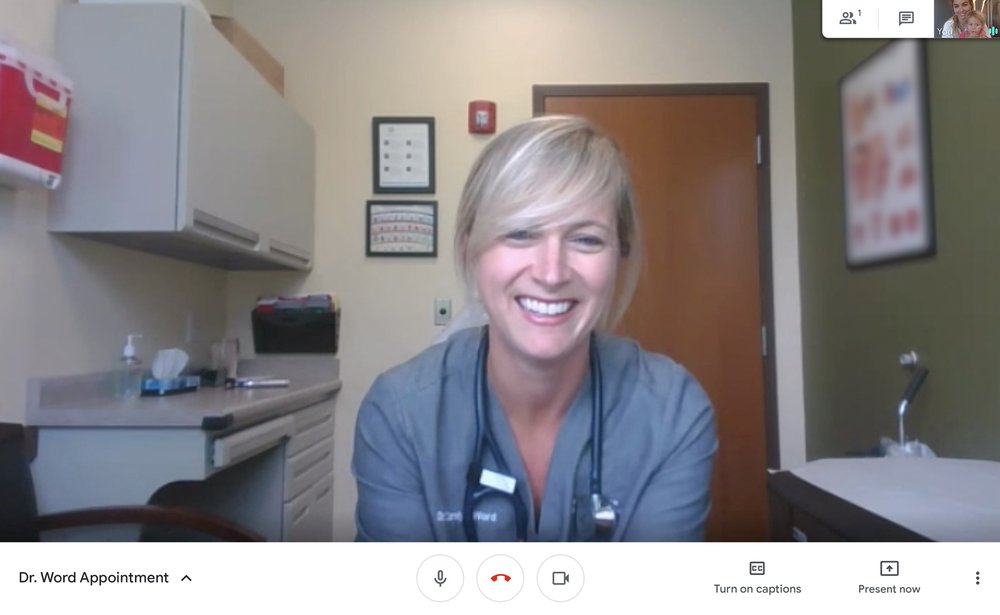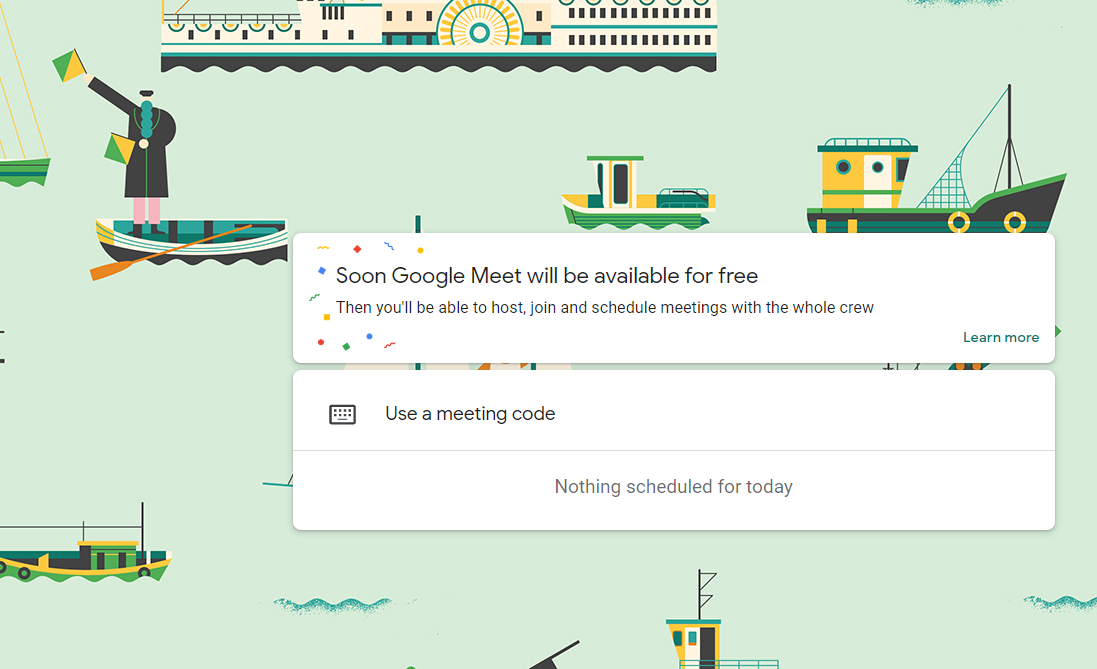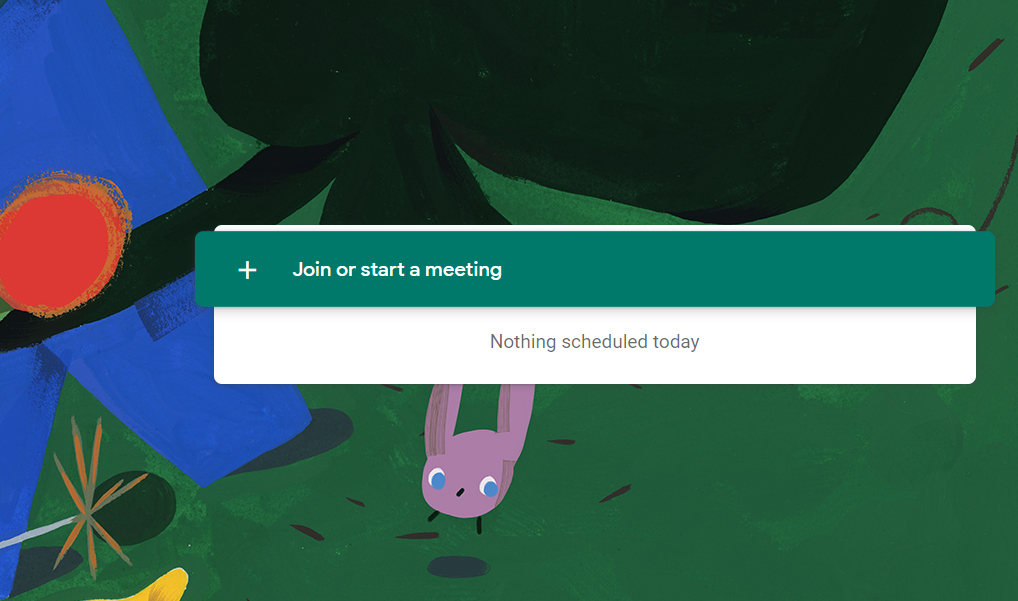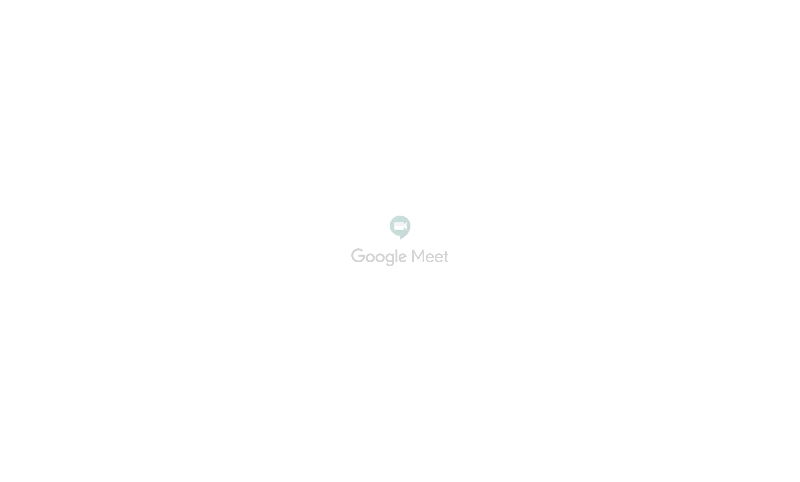Google announced in their blog that they’re making Google Meet, their video conferencing product, free for everyone as a response to Zoom’s recent boom. The service will be available to use “over the coming weeks”, according to Google.
Previously, Google Meet was restricted to G Suite for enterprises and schools. G Suite comprises of other communication features like Gmail and Hangouts, storage features and tools like Docs and Slides for productivity, and is a paid plan of up to USD25 per person per month if used for businesses. However, G Suite for schools and nonprofit organisations can be used for free.
“We’ve invested years in making Meet a secure and reliable video conferencing solution that’s trusted by schools, governments and enterprises around the world. Starting in early May, anyone with an email address can sign up for Meet and enjoy many of the same features available to our business and education users, such as simple scheduling and screen sharing, real-time captions, and layouts that adapt to your preference, including an expanded tiled view,” wrote Vice President & GM of G Suite Javier Soltero.

What a ‘Google Meeting’ might look like.
Source: Google Blog
How safe is Google Meet?
Google emphasises how “privacy and security are paramount” for Meet, and as of last week, Meet’s daily meeting participants surpassed 100 million and adding roughly 3 million new users every day. They designed the Google Meet to operate on a “secure foundation”, providing data security, and keeping users’ information private. Here are their safety measures, according to their blog:
- Providing a strong set of host controls such as the ability to admit or deny entry to a meeting, and mute or remove participants, if needed.
- Does not allow anonymous users (i.e., without a Google Account) to join meetings created by individual accounts.
- Meet meeting codes are complex by default and therefore resilient to brute-force ‘guessing’.
- Meet video meetings are encrypted in transit, and all recordings stored in Google Drive are encrypted in transit and at rest.
- They don’t require plugins to use Meet on the web. It works entirely in Chrome and other modern browsers.
- On mobile, they have dedicated Google Meet apps in the Apple App Store and Google Play Store.
- Users can enrol their account in Google’s Advanced Protection Program—to protect against phishing and account hijacking.
- Google Cloud undergoes regular rigorous security and privacy audits for all its services.
- Meet data is not used for advertising, and we don’t sell your data to third parties.
The strict emphasis on user safety is in response to concerns to do with Zoom’s own safety and privacy issues. Zoom CEO Eric Yuan went so far as to send a message to Zoom users on the company blog apologising for having “fallen short” of necessary standards, like reports of “Zoom-bombing” where trolls join rooms to broadcast inappropriate content and even the potential loss of Windows credentials.
How to sign up for Meet
Like Google mentioned earlier, the service will only be coming to everyone in the coming weeks. Currently in Malaysia, it is still unavailable for individual users, but the page announces that “soon Google Meet will be available for free”. When you’re able to access the feature, the page will look like the second picture below.
Here’s how you can make sure you get the access to it as soon as it’s available in Malaysia:
- Make sure you’re signed up as a Gmail user. You can sign up free.
- If you’d rather use your mobile phone, download the Google Meet app for iOS or Android.
- Click here to sign up to be notified for when you can start using Meet for free.
- Click either ‘Personal Use’ or ‘Business Use’ depending on your needs.
- Type in your details in the form given and click ‘Submit’.
Once you get notified in the coming weeks, you can access the Google Meet site, sign in with your Gmail account to access the feature. Meetings are limited to only 60 minutes if you’re accessing Google Meet for free, but Google won’t enforce this time limit until after 30th September. Google is also giving G Suite customers access to Meet’s advanced features, such as live-streaming to 100,000 viewers within a domain until 30th September.











